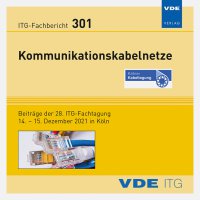Impact of the burner flame shape on cable burn performance testing according to EN 50399
Conference: Kommunikationskabelnetze - 28. ITG-Fachtagung
12/14/2021 - 12/15/2021 at Köln, Deutschland
Proceedings: ITG-Fb. 301: Kommunikationskabelnetze
Pages: 8Language: englishTyp: PDF
Personal VDE Members are entitled to a 10% discount on this title
Authors:
Meyer, Thomas; Stoecklein, Waldemar (Corning Optical Communications GmbH & Co. KG, Berlin, Germany)
Abstract:
According to the European Construction Products Regulation (CPR), all cables intended to be permanently installed in construction works must be tested and classified with regard to their fire behavior. The cable burn test according to EN 50399 is the most important test method for determining the cable burn performance and decisive regarding classification into corresponding CPR classes. The main test criteria in burn performance are the vertical flame spread (FS), heat and smoke production (THR, TSP). The burner parameter settings and the control of the burner flame power (20.5kW) are defined in the standard. A revised version of the CLC/EN 50399 standard describes a method, recommended for checking the burner flame shape. This paper is a continuation of previous investigations being focused on different flame shapes and their effects on the burn test results, in particular the FS. e.g. the gas mixture of the burner flame was varied to demonstrate how leaks in the gas supply tubing could be identified via the change of the flame shape. Furthermore, the impact of the burner hole diameter was investigated. With decreasing hole diameter the extension of the flame in the horizontal direction increases which reduces the impact of the flame on the cable and thus leads to a reduction of FS. Modeling was used to predict this trend. The impact of modified flame shapes on the FS was demonstrated, using a reference cable as recommended in the CLC/EN 50399 standard. It could be shown that the flame shape can be used to predict the FS.


